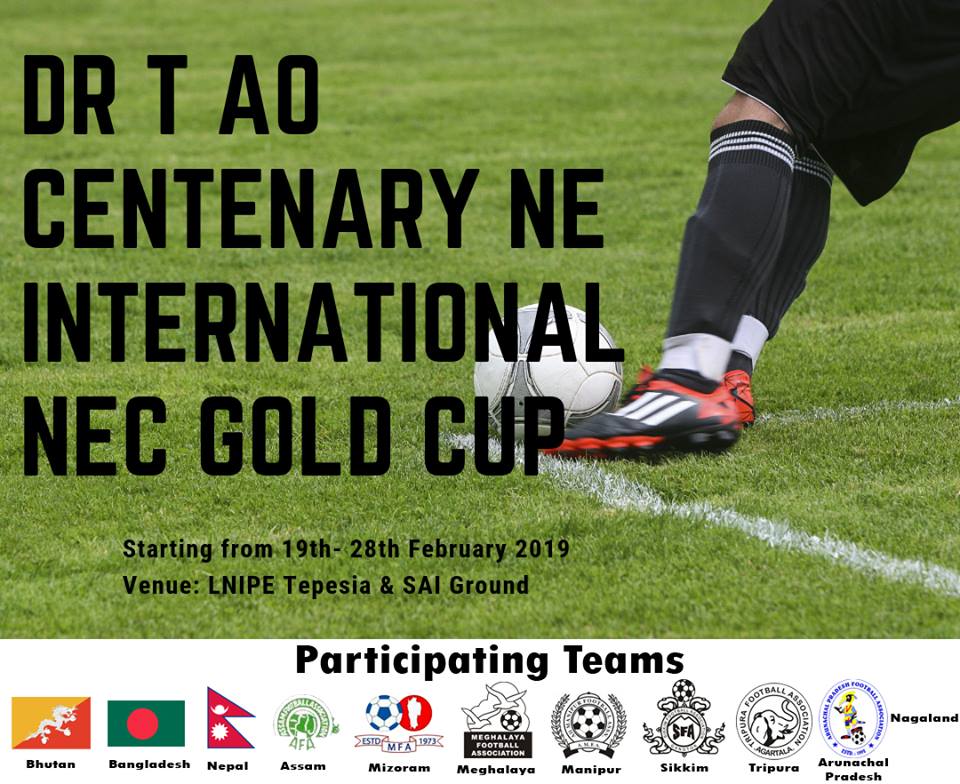Begin typing your search above and press return to search.
Football
Football: 2nd T Ao Gold Cup under-21 tournament from today

The second edition of T Ao North East International NEC Gold Cup under-21 football tournament with the participation of 11 teams including three foreign teams will begin from February 19 in Guwahati. Talimeren Ao popularly known as T Ao was the first captain of independent Indian team which took part in 1948 London Summer Olympics. The tournament was started to mark the centenary birth anniversary of Ao last year. The matches will be played at Lakshmibai National Institute of Physical Education (LNIPE) ground at Tepesia and Sports Authority of India (SAI) ground at Paltan Bazar. The inauguration and the final matches will be held at the SAI ground. Apart from the eight northeastern teams, the foreign participants are All Nepal Football Academy, KT United of Bhutan and Saif Sporting Club of Bangladesh. The organizers said that the prize money is Rs 15.04 lakh which is being touted to be the highest in the region. “This is probably the first and only under 21 football tournament in the northeast India which is otherwise known for the football talents. And it has also been approved by the Asian Football Confederation (AFC). This is going to be an exciting tournament as the countries have promised to send their best possible teams,” said Swapnanil Baruah, president of the organizing committee. The winner will take Rs 8 lakh while the runner up team will be richer by Rs 4 lakh. The losing teams at the semifinal will be given Rs 1 lakh each. The best player of the tournament will get Rs 25 thousand, the best goalkeeper and the highest goal scorer will get Rs 10 thousand each. Apart from that, the best player of the final will get Rs 5 thousand and best player of each match will get Rs 2 thousand. Besides, each team will get Rs 50 thousand for the team preparation and Rs 25 thousand as appearance fee. The teams have been divided in two groups. Group A features home team Assam along with Bhutan and Bangladesh besides Arunachal Pradesh and Sikkim. While, the group B comprises Nepal, Nagaland, Meghalaya, Mizoram, Manipur and Tripura. Among others former India international Renedy Singh, Arunachal Pradesh’s most famous footballer Gumpe Rime and most decorated women weightlifter N Kunjarani Devi will be present during the inaugural session. Subodh Malla Baruah, secretary of the organizing committee said that during the last year’s tournament, at least 16 players were shortlisted for various ISL teams. “This time also we have written to the ISL and other teams to send their spotters. We will be glad if at least 30 players can be shortlisted,” Baruah told The Bridge. Speaking more on the importance of the tournament, Baruah said that it’s a much needed platform for the region. “Though the northeast India is called as the hotbed of football, we didn’t have this kind of tournament covering all the states and the neighbouring countries. This will not aonly increase the competitiveness among the players and build a better environment for football but also help in maintaining a friendly relationship with our neighbours. This kind of tournament should have been started much before,” Baruah, also the president of the Sports Journalists Federation of India said. The organizers have also thanked the North East Council, Assam government and OIL for their support. T Ao was born in 1918 in Naga Hills of Assam that eventually became Nagaland later. Apparently, he also became the first Naga to complete his MBBS two years after he scripted history by leading team India in 1948 London Olympics. Sharda Ugra, a senior sports writer, once wrote, “A phantom figure who hovers over the football history of free India, his footprints have faded but the name is resonant and powerful in the collective memory of his people,” to describe Ao. He also captained Mohun Bagan in the late 1940s.
Next Story






